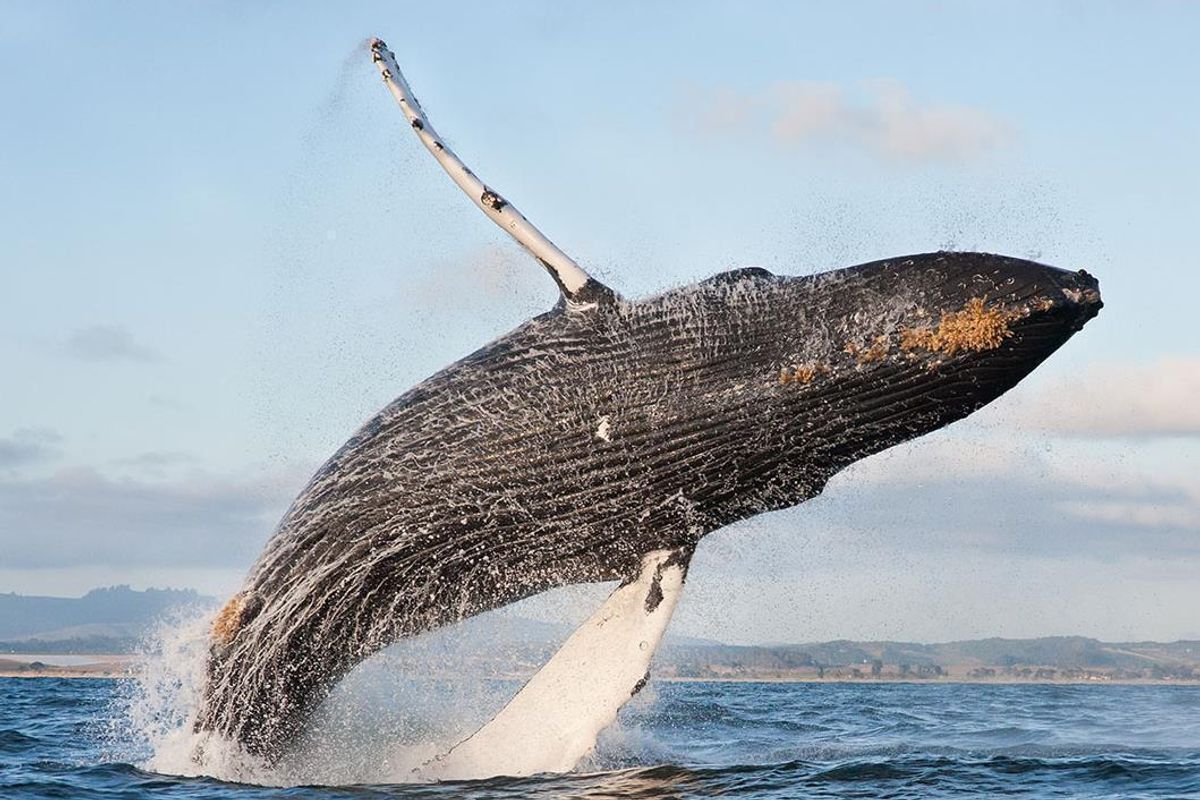There's nothing quite like witnessing a mammal the size of a school bus catapult itself out of a saline body of water and ignite the water below like white fireworks on the Fourth of July. Fortunately, around the Bay Area, the waters bordering San Francisco have proven themselves to be a seasonal hotspot for whale migrations—and, thus, whale watching. Here's what you need to know about seeing these gentle giants in their natural habitat.
Big, Bold, Blue Behemoths: Blue Whales
If size was the sole factor responsible for power, prestige, and prowess in the world, humans would be out of luck. Blue whales are the largest animals to ever live. Ever. Stretching the length of three school buses back-to-back and weighing more than ten of said buses, blue whales comb the San Francisco Bay looking for pockets of krill. Due to increased environmental stresses, 19th-century whaling practices, and ocean acidification, however, these gentle giants almost went the way of the dinosaurs. Luckily, The Red List reports that blue whale numbers have been on the rise for the past ten years.

Musings Under the Wake: Humpback Whales
If you're a lover of sleep soundtracks, odds are that you've dozed off to some iteration of a humpback's call. San Francisco has a unique place in the life cycle of Humpback whales—they immediately shoot-off from the Mexican coastline nurseries with their young calves and feast off the rich summer anchovy, sardine, and krill populations in local waters, regaining their lost birth weights while teaching their newborns how to feed. And what's more adorable than watching a mother whale coax her shy newborn into a cloud of krill and into the limelight found off the starboard side? Humpback whales face many of the same ecological and environmental plights as their large-than-life blue cousins. Thankfully, their population is also increasing in numbers year after year.
The When:
Humpbacks and Blues frequent the Bay Area between May and November, leaving you a full seven months to Instagram and Snapchat one of these leviathans. Use this tips to increase the likelihood of spotting a whale.
- Clear, sunny skies mean krill will be at their most active—and the whales will follow
- 11 am and 3 pm yield what's called "optimal sun intensity," meaning you'll be able to see really, really deep into those blue waters
- Check for date-specific sightings via The Monterey Bay Whale Watch to get a good idea of what will be making its way up to the Bay Area
- Try to avoid rough seas and the day after a storm—churning, cloudy water doesn't make for a good watching experience
The Where and How:
First things first: you're, by law, not permitted to get closer than 300-feet to any whale species in the state of California without special licensing. With that in mind, your best bet to get within your iPhone's zooming capabilities is taking a watching tour.
Oceanic Society
Oceanic Society offers whale watching in the Farallon Islands from May through November. Each trip is led and organized by an experienced naturalist and lasts about eight hours for a full-day's adventure to the island's 27 miles of coast—so bring plenty of snacks. // Tours depart daily at 7:30 am from Marina Yacht Harbor at 3950 Scott St. (Marina) , oceanicsociety.org
San Francisco Whale Tours
If you don't see a whale, porpoise or dolphin on your trip with San Francisco Whale Tours, your next trip is free. Their Farallon Island tours run year-round, though we'd still only recommend taking them from May through November. Be sure to print out their checklist to make a game out of wildlife watching during your six-hour trip! // Tours depart daily at 8:00 a.m. from Pier 39, Dock B (North Beach), sanfranciscowhaletours.com
This article has been updated since it was originally published in June 2016.





















